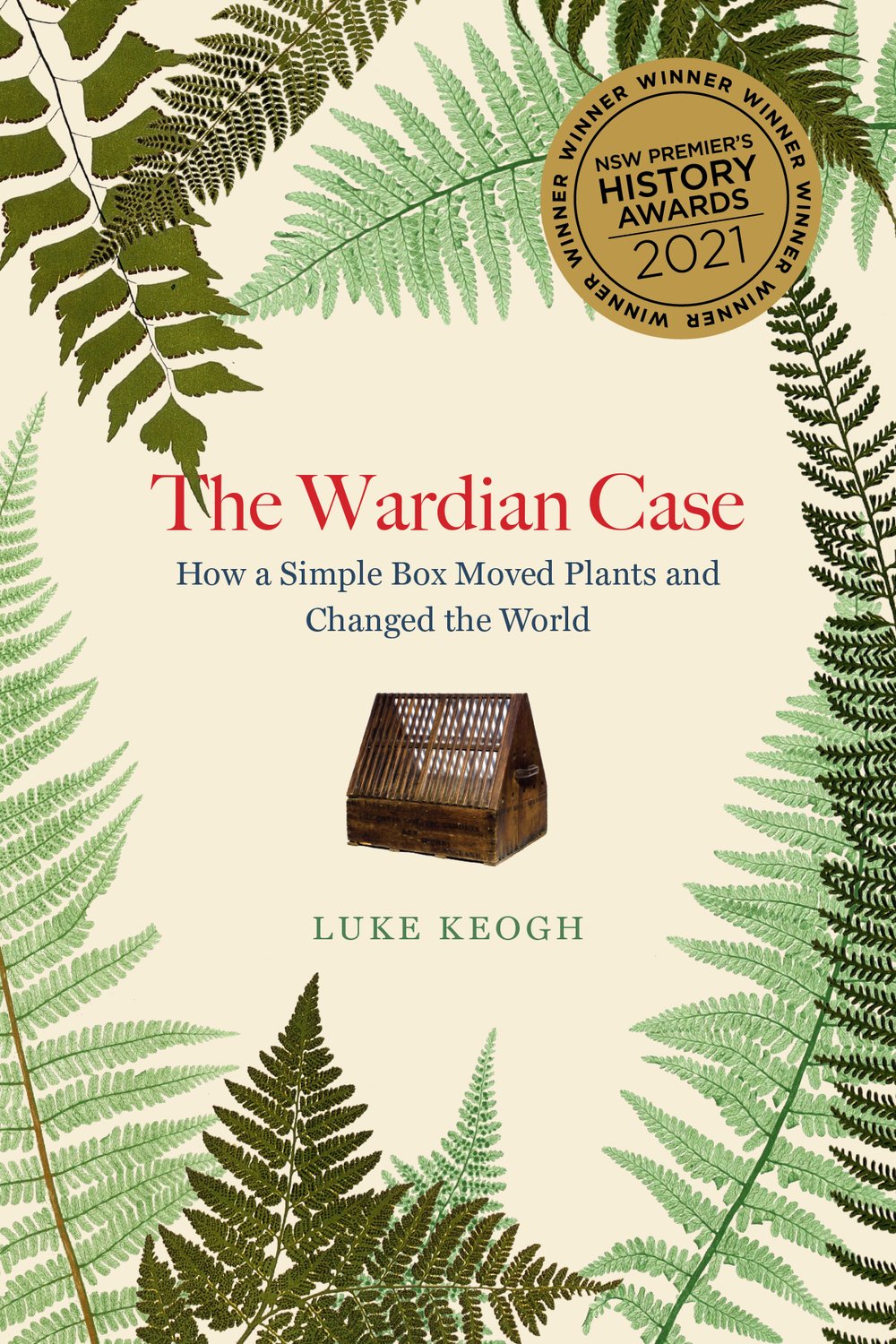The Wardian Case
How a simple box moved plants and changed the world

*Winner of the NSW Premier's History Award — General History*
Roses, jasmine, fuchsia, chrysanthemums, and rhododendrons bloom in gardens across the world, and yet many of the most common varieties have root in Asia. How is this global flowering possible?
In 1829, surgeon and amateur naturalist Nathaniel Bagshaw Ward placed soil, dried leaves, and the pupa of a sphinx moth into a sealed glass bottle, intending to observe the moth hatch. But when a fern and meadow grass sprouted from the soil, he accidentally discovered that plants enclosed in glass containers could survive for long periods without watering. After four years of experimentation in his London home, Ward created traveling glazed cases that would be able to transport plants around the world. Following a test run from London to Sydney, Ward was proven correct: the Wardian case was born, and the botanical makeup of the world's flora was forever changed. In our technologically advanced and globalised contemporary world, it is easy to forget that not long ago it was extremely difficult to transfer plants from place to place, as they often died from mishandling, cold weather, and ocean salt spray.
In this first book on the Wardian case, Luke Keogh leads us across centuries and seas to show that Ward's invention spurred a revolution in the movement of plants — and that many of the repercussions of that revolution are still with us, from new industries to invasive plant species. From the early days of rubber, banana, tea, and cinchona cultivation-the last used in the production of the malaria drug quinine — to the collecting of beautiful and exotic flora like orchids in the first great greenhouses at the Royal Botanic Gardens, Kew and the United States Botanical Garden in Washington, DC, the Wardian case transformed the world's plant communities, fuelled the commercial nursery trade and late nineteenth-century imperialism, and forever altered the global environment.
'Environmental historian Keogh charts the history of the Wardian case, a traveling greenhouse, in his fascinating debut...Any gardener fascinated by history will find this well-told story fruitful.' — Publishers Weekly
'Explores how a humble box made of wood and glass changed the course of world history...[A] well-balanced, thoughtful account...Keogh carefully teases out the connections between this innovation and its multiple consequences...An in-depth study that will suit detail-oriented gardeners and natural history buffs.' — Kirkus Reviews
'An airtight box built in the late 1820s of glass panes and a wooden frame, the Wardian case was ingenious in its construction and application. Its inventor, an amiable English physician and amateur botanist named Nathaniel Bagshaw Ward, discovered that plants rooted in moist soil, then hermetically sealed in the box, and that box placed in a sunny location, could grow for weeks, even months, with little maintenance...Keogh tracks the preeminent role, for better or worse, that the Wardian case played over the next century, first in the creation of many of the world's major botanic gardens, then in the development of a massive international market for nonnative plants, resulting in the colonization of nations for the cultivation of cash crops and the often-ruinous spread of plant pests, diseases, and invasive species. If the Wardian case has long been abandoned for the air-freighting of plant material, Keogh's bittersweet history reveals just how impactful that simple box remains today.' — Booklist
